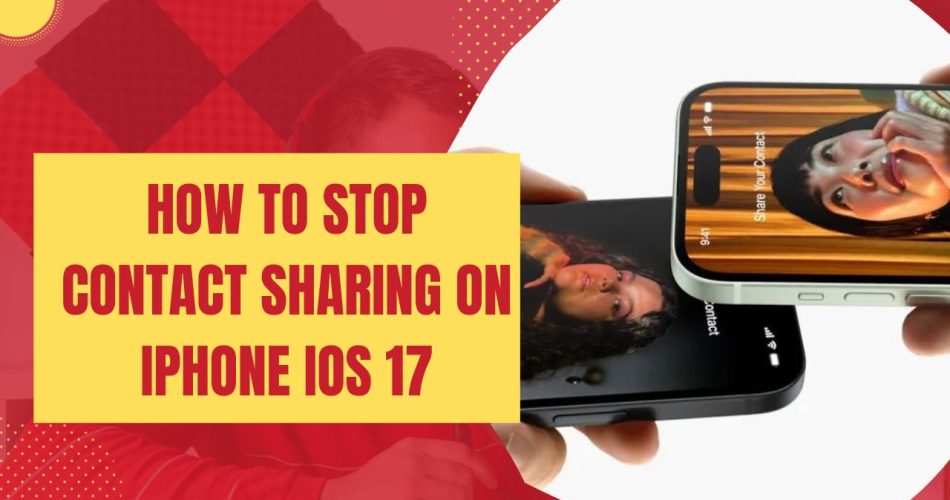One of the newest features introduced in iOS 17 is automated contact sharing using the NameDrop feature. While convenient, not everyone may be comfortable sharing their contacts with random nearby strangers.
Fortunately, like all iPhone settings, it can be easily disabled. In this comprehensive guide, let’s explore what the NameDrop contact sharing feature is, why you may want to disable it, and step-by-step instructions to turn it off completely.
See More: How to Set Up Contact Sharing on iOS 17
What’s iPhone’s New Auto Contact Sharing
The recently launched iOS 17 update brings a pioneering feature called NameDrop to iPhones. It enables automatically exchanging contact details with nearby iPhone owners by simply bringing the devices in close proximity.
Here is how it works:
- Your name and photo are retrieved from your Apple ID.
- A shareable virtual business card or “contact poster” with your phone number and email is generated.
- Nearby iPhones with iOS 17 detect your device via ultrawideband chip.
- Your poster details transfer for one-tap saving into their Contacts app.
- This streamlines sharing contact information seamlessly versus manually adding details or scanning QR codes.
While convenient in some contexts, you may want to disable contact sharing completely at other times for privacy or security reasons.
How to Turn Off Contact Sharing on iPhone in iOS 17
Fortunately, like all iPhone settings, NameDrop’s automated contact sharing can be disabled easily by toggling an option.
Follow these step-by-step instructions to turn it off:
- Open Settings app on your iPhone.
- Scroll down and tap on General.
- Next choose AirDrop.
- Under the Bringing Devices Together section, turn off the switch next to Contacts.
This immediately and completely disables contact sharing via NameDrop on your device. The info won’t transfer even if another user tries bringing their iPhone near it.
For additional protection, also toggle off NameDrop below in the same AirDrop menu. This prevents sharing your name and profile photo automatically too.
And that’s all it takes! Just a few taps to gain control over contacts privacy.
How to Customize Contact Sharing Preferences
Once disabled, you can re-enable NameDrop contact sharing whenever needed in the same Settings area. The toggles make it easy to customize sharing as per your situational preference.
Some examples of customizing based on context:
- Keep disabled at home for complete privacy.
- Enable only when attending conferences or networking events.
- Share basic info but limit metadata with partial toggles.
So feel free to experiment with what levels of automated contact sharing you are comfortable with across contexts.
The Convenience vs Privacy Dilemma
Contact sharing innovations like NameDrop solve the friction of exchanging virtual business cards. But it also raises privacy considerations with automatically transmitting personal data to strangers in the vicinity.
The power to restrict app permissions through Apple’s robust privacy settings puts you firmly in control. Disable contact sharing when preferred for discretion. And take advantage of it by enabling when convenient among trusted connections.
As innovations march forward, so too must consumer privacy rights advance in step. NameDrop’s thoughtful privacy controls reflect Apple’s leadership in that regard.
The next time you upgrade your OS, don’t forget to revisit settings that may default to sharing more of your sensitive information. With a few timely taps, you can continue enjoying both the convenience of new features and retain control over your data.
So stay smart and don’t hesitate to disable contact sharing or limit app permissions whenever you want on your iPhone!

